Ever since child beauty queen JonBenét Ramsey was found murdered in Boulder, Colorado on December 26, 1996, investigators and amateur sleuths alike have puzzled over who killed her.

FacebookJonBenét Ramsey’s murder remains unsolved to this day, though a number of suspects have emerged over the years.
On the day after Christmas in 1996, police in Boulder, Colorado received an alarming 911 call about a missing six-year-old girl named JonBenét Ramsey. “We have a kidnapping,” her mother, Patsy, cried. “Hurry, please… There’s a [ransom] note left and our daughter’s gone.” Tragically, the young girl’s dead body was discovered in the family’s basement just hours later. And the investigation to find out who killed JonBenét Ramsey began.
In the decades since, investigators and amateur sleuths alike have identified a number of suspects in JonBenét’s murder. Some believe that JonBenét was killed by someone in her family: her mother Patsy, her father John, or even her brother Burke, who was just nine at the time. Some believe that the six-year-old was killed by someone with a connection to the family, such as their housekeeper Linda Hoffman-Pugh, a local electrician named Michael Helgoth, or a family friend named Bill McReynolds, who had paid close attention to JonBenét when he dressed up as Santa Claus just days earlier.
Others, however, believe that JonBenét’s success on the child beauty pageant circuit might have caught the attention of pedophiles. Some suspect that a sex offender named Gary Oliva might be behind her death, and John Mark Karr, who had fled the U.S. after being caught with child pornography, even confessed to killing JonBenét in 2006.
To this day, the question of who killed JonBenét Ramsey remains a chilling, ongoing mystery. But here are some of the people who have consistently drawn the attention of authorities and online sleuths alike.
Who Killed JonBenét Ramsey? The Full Story Of Her Shocking 1996 Murder
Until December 1996, the Ramsey family — John, Patsy, Burke, and JonBenét — seemed to live a normal and happy life. John was a successful businessman who had sold a company for millions of dollars, the family lived in a nice house in Boulder, Colorado, and while Burke seemed to be doing well in school, JonBenét was making waves in the child beauty pageant scene. But everything changed on the day after Christmas.
At around 5:30 a.m. on December 26, 1996, Patsy Ramsey purportedly stumbled upon a note on the staircase. It was a two-and-a-half-page ransom note from someone who claimed to have JonBenét and demanded $118,000 for her return. After finding JonBenét’s bed empty, Patsy called 911.
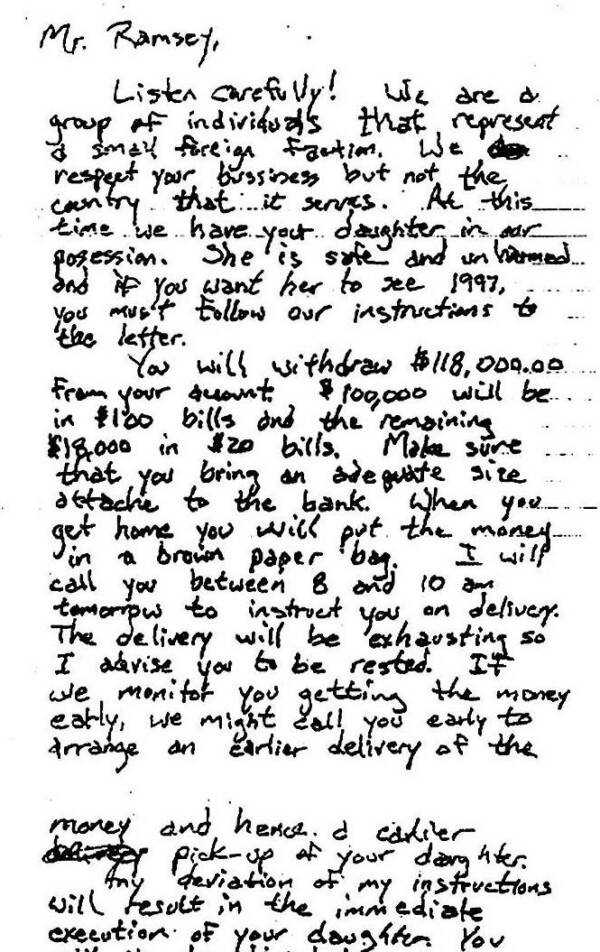
Wikimedia CommonsThe ransom note in the Ramsey home, which demanded $118,000 for JonBenét’s safe return.
“There’s a note left and our daughter is gone,” Patsy cried. “[We] just got up and she’s not here. Oh my God, please… Please send somebody.”
Police and family friends swiftly descended upon the house. But they found no sign of the missing girl — and the kidnappers did not call between 8 and 10 a.m., as they said they would in the ransom note. By 10 a.m., most people had left the home, leaving a detective named Linda Arndt behind with John and Patsy. After Arndt suggested that they go through the house again to see if anything was amiss, John Ramsey decided to search the basement.
There, he said he found JonBenét’s body.
The six-year-old had been bludgeoned and strangled, and she had duct tape over her mouth. Her arms were also bound. John carried his murdered daughter upstairs to where his wife and the detective were waiting — and the search to find out who killed JonBenét Ramsey immediately began.
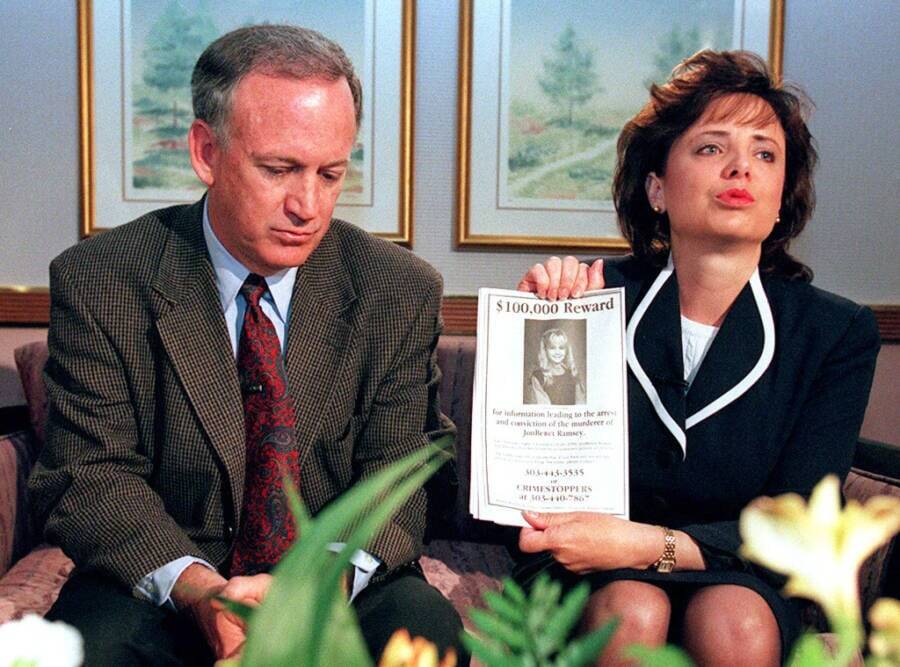
Helen Davis/The Denver Post
John and Patsy Ramsey appealing for information about their daughter’s murder.
For Detective Arndt and several other investigators involved in the murder case, the Ramsey family seemed like prime suspects.
Why John Ramsey And Patsy Ramsey Were Considered Suspects In Their Daughter’s Murder

John RamseyThe Ramsey family: John, Patsy, Burke, and JonBenét.
In the aftermath of JonBenét Ramsey’s murder, many authorities suspected that her parents had something to do with her death.
For starters, JonBenét had been found in her family’s basement. Her body had been located by her father, after a search by others turned up no results. The garrote around her neck was partly made from one of Patsy’s paintbrushes, the paper and pen used to write the ransom note were found in the Ramsey home, and a handwriting expert with the Colorado Bureau of Investigation thought that the note’s handwriting was similar to Patsy’s.
Even the amount of money that the kidnappers demanded — $118,000 — exactly matched the bonus that John Ramsey had received that year.
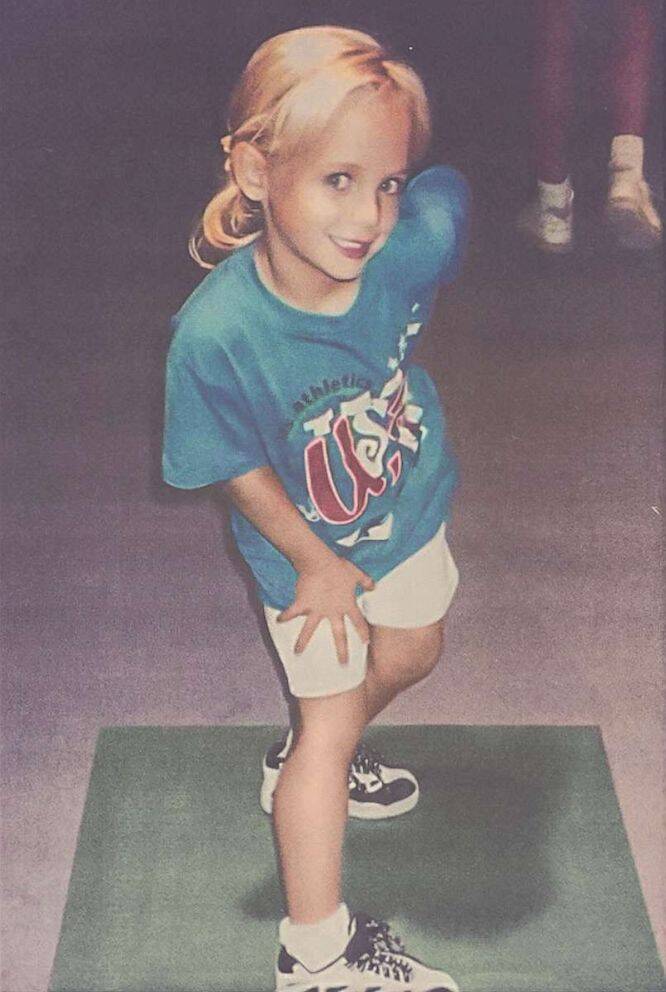
John RamseyJonBenét Ramsey in an undated family photo.
What’s more, a grand jury sought to indict Patsy and John Ramsey in 1999 for child abuse. They were accused of “unlawfully, knowingly, recklessly and feloniously [permitting] a child to be unreasonably placed in a situation which posed a threat of injury to the child’s life or health.”
However, a Boulder prosecutor ultimately disagreed with the grand jury, and the evidence against the Ramseys was considered too weak to bring the case to trial. And other investigators have disagreed with the theory that John and Patsy had anything to do with their daughter’s murder.
When retired detective Lou Smit first joined the investigation, he originally thought that it would be a “slam dunk” and that evidence would lead to John and Patsy. However, Smit came to believe that an open window in the basement, an unexplained footprint near JonBenét’s body, and evidence that someone had used a stun gun on her all suggested that an outside intruder — and not John and Patsy — had killed the six-year-old girl.
Then again, some believe that John and Patsy were involved in JonBenét’s death in a different way. They suspect that she was actually killed by her nine-year-old brother Burke — and that their parents covered it up.
Who Killed JonBenét Ramsey? Here’s Why Some Think It Was Her Brother Burke
Though Burke Ramsey was just nine years old at the time of his sister’s death, some suspect that he may have killed his sister by accident.
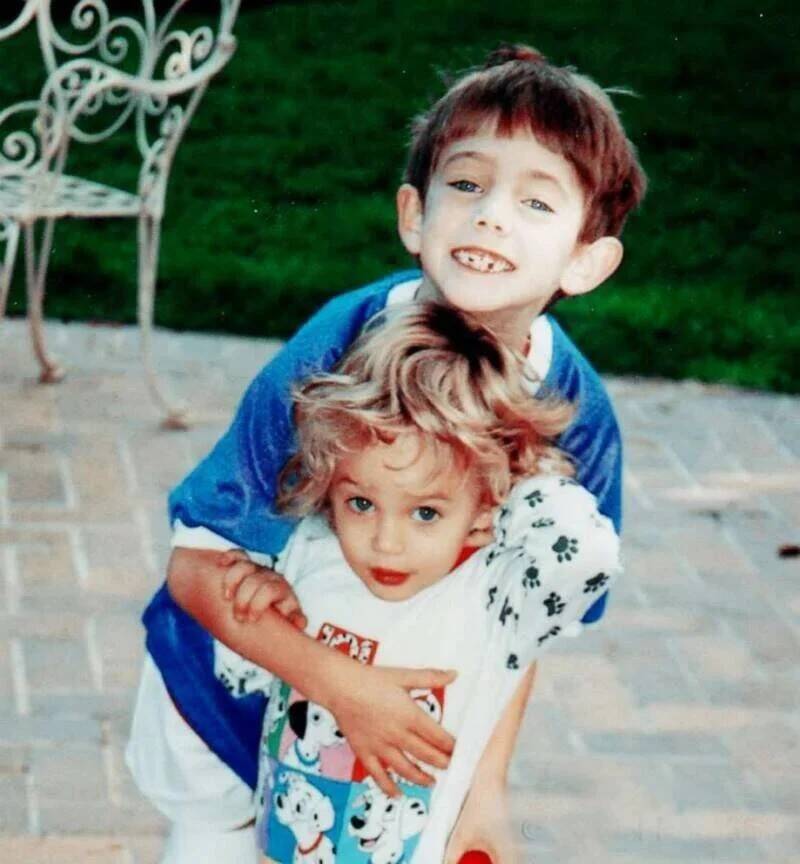
John RamseyBurke Ramsey and JonBenét Ramsey.
Before JonBenét’s death, the two siblings allegedly had a contentious relationship. According to a Rolling Stone article from 2016, Burke purportedly committed numerous “scatological” infractions in the Ramsey home, smearing feces in the family’s bathroom, as well as in JonBenét’s bedroom, and possibly even in her bed. What’s more, a family friend remembered that Patsy told her that Burke had hit JonBenét in the head with a golf club about a year and a half before she was killed.
But did Burke kill his little sister in 1996? Some are convinced by the theory that Burke was the one who killed JonBenét Ramsey because of undigested pineapple that was later found in JonBenét’s stomach.
Though Patsy denied giving pineapple to her children, a bowl of the fruit was found on the kitchen counter the next morning — with Burke’s fingerprints on the bowl. (Patsy’s prints were also found.) Some suspect that Burke — who has admitted to getting up in the night to play with one of his Christmas presents after everyone else had gone to bed — prepared the pineapple for himself as a snack. This theory suggests that Burke was eating the pineapple when JonBenét came downstairs. When she stole a piece of the fruit, he hit her in the head with an object, possibly a flashlight.
Then, when his parents realized what had happened, they supposedly made JonBenét’s death look like a botched kidnapping to protect their son.
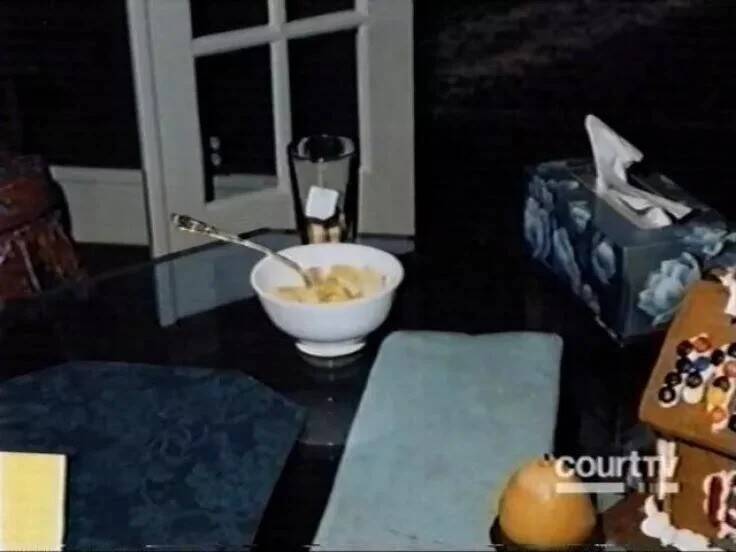
Court TVBurke’s fingerprints were found on this bowl of pineapple in the kitchen the day that JonBenét’s body was discovered.
But Burke Ramsey and his parents have adamantly denied that Burke had anything to do with JonBenét’s murder. When CBS aired the docuseries The Case of: JonBenét Ramsey in 2016 and made the case that Burke was involved, he sued the network for $750 million (they later settled).
So who killed JonBenét Ramsey, if it wasn’t her parents or her brother? Another theory suggests that it was someone else who had access to the Ramsey home — their housekeeper, Linda Hoffman-Pugh.
Inside The Theory That The Ramseys’ Housekeeper Killed JonBenét
By the time JonBenét was murdered, Linda Hoffman-Pugh had been the family’s housekeeper for over a year. But it hadn’t been all smooth sailing.
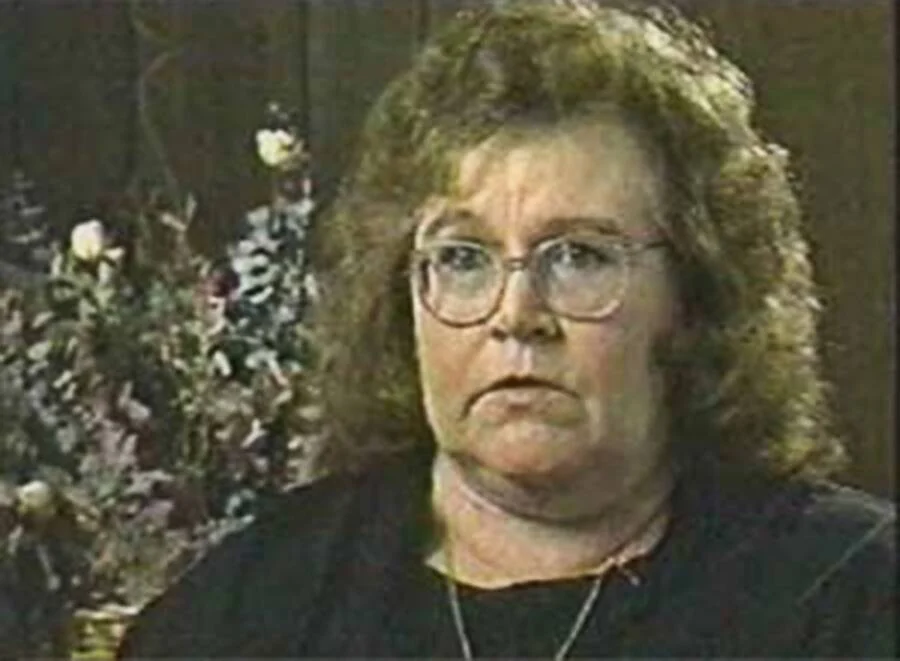
YouTubeLinda Hoffman-Pugh had access to the Ramsey house, but most evidence against her is circumstantial.
Patsy Ramsey alleged that Hoffman-Pugh had been struggling financially and had asked the family for a loan of $2,000. (Hoffman-Pugh, for her part, claimed that Patsy was erratic, prone to mood swings, and had “multiple personalities.”) What’s more, Hoffman-Pugh had a key to the Ramsey house, knew the family’s schedule, and investigators found the same kind of duct tape in her home as the kind that had been used on JonBenét.
Hoffman-Pugh had access. She may have had a grudge against the Ramseys. She had a weak alibi (she claimed to be at home, sleeping in her bed, but her husband, who was asleep on the couch, couldn’t corroborate). And because of all the time she spent with the Ramseys, Hoffman-Pugh may have known that John had recently gotten a bonus for $118,000. Police even checked Hoffman-Pugh’s handwriting against the handwriting on the ransom note and took her fingerprints and strands of her hair.
But all the “evidence” against Hoffman-Pugh is ultimately circumstantial. Nothing definitively ties the housekeeper to JonBenét’s murder, and Hoffman-Pugh has always denied being involved in the child’s death.
Michael Helgoth, The Local Electrician Who Died By Suicide During The Investigation
Another commonly suggested suspect in JonBenét’s death is Michael Helgoth, an electrician who often worked near the Ramseys.
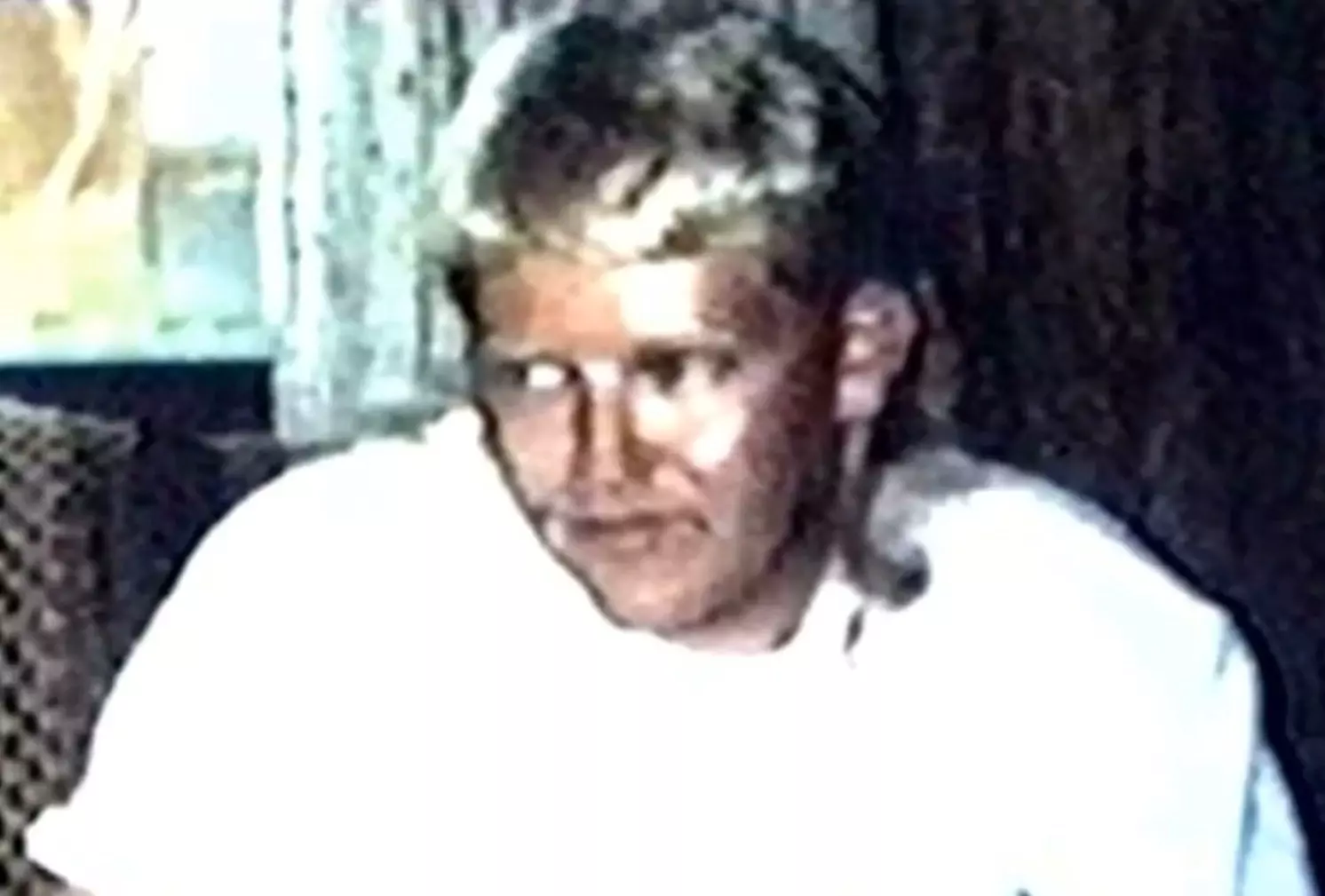
YouTubeMichael Helgoth died by suicide shortly after the Boulder D.A. announced that they’d narrowed down a list of suspects.
Trip DeMuth, one of the original prosecutors on the case, told CNN that there were some suspicious things about Helgoth. He purportedly owned shoes that matched the mysterious footprint found in the Ramseys’ basement, he owned a stun gun, and Helgoth had a hat with the letters “s-b-t-c” — which matched letters that were written in the signature of the ransom note.
Perhaps most suspicious of all was Helgoth’s demise. Shortly after the Boulder District Attorney’s office announced they had narrowed down a list of suspects in the JonBenét case in 1997, Helgoth died by suicide.
Ollie Gray, the Ramseys’ longtime private investigator, agreed that Helgoth’s suicide was suspicious. But he thought that it was suspicious because it didn’t look like a suicide (Helgoth was known to have been right handed, but the trajectory of the bullet that killed him went from left to right).
“I think it’s worth following up on,” Gray told Inside Edition in 2016.
Bill McReynolds, The Town Santa
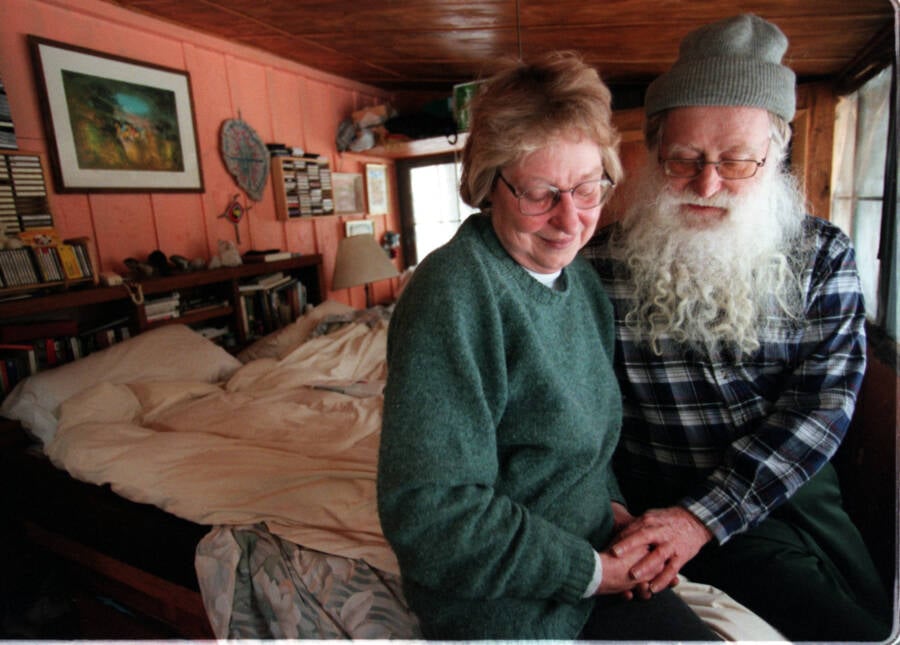
Denver Public LibraryBill and Janet McReynolds in February 1997, a couple of months after JonBenét Ramsey’s murder.
Just days before JonBenét’s murder, the Ramseys had a Christmas party at their home. Santa Claus was played by their family friend Bill McReynolds, with his wife, Janet, playing Mrs. Claus. This all seemed perfectly innocent. But after JonBenét’s death, her interactions with “Santa” were reexamined.
Some alleged that Bill had shown an unusual interest in JonBenét. Rumors circulated that he prized a vial of glitter that she’d once given him and that he’d chosen her to be his “special friend.” Bill had even given JonBenét a card that said, “You will receive a special gift after Christmas.”
“Statements like that led me to have some sort of suspicion: What was going on between Santa Bill and JonBenét? Again, he is an individual who was involved with her, had an interest in her, was seen with her, shortly before the murder,” DeMuth, the prosecutor, told CNN.
Plus, Bill and Janet McReynolds had a strange history of abduction all their own. Their own daughter had been abducted (she was later found) in 1974 — on December 26th, the same day that JonBenét’s body was discovered. A couple of years after the 1974 abduction, Janet had even written a play in which a girl was molested, tortured, murdered — and left in a basement.
That said, the couple gave police their hair, samples of their handwriting, and blood samples. In the end, investigators never found any definitive connection between the McReynolds and JonBenét Ramsey’s murder.
Indeed, many people believe that the answer to the question “Who killed JonBenét Ramsey?” would be found in a darker place. Since 1996, a number of pedophiles have been considered suspects in her murder.
John Mark Karr, The Alleged Pedophile Who Confessed To Killing JonBenét
In 2006, a former schoolteacher named John Mark Karr offered an answer to the question of who killed JonBenét Ramsey — himself.
Karr, then living in Thailand — where he’d moved to evade child pornography charges — reached out to University of Colorado professor Michael Tracey, who was making a documentary on the JonBenét case. As they exchanged emails, Tracey became disturbed and notified the police.
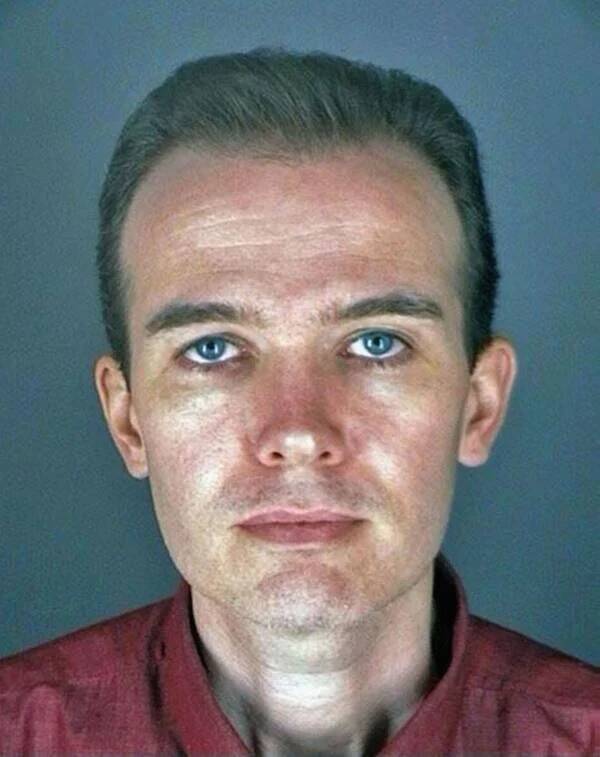
Boulder County Sheriff’s Office via Getty ImagesJohn Mark Karr confessed to killing JonBenét, but investigators couldn’t link him to the crime.
Arrested and extradited to the United States, Karr confessed to the crime. He said that JonBenét Ramsey’s death had been an “accident” and that he was “very sorry for what happened to JonBenét.”
But nothing tied Karr to the crime scene. DNA evidence from the Ramsey house wasn’t a match, and it didn’t appear that Karr had even been in Boulder at the time. He was dismissed as a fame-seeking pedophile.
Karr is now allegedly living as a woman named Alexis Reich.
Gary Oliva, The Convicted Sex Offender
On December 26, 1996, Gary Oliva called his friend, Michael Vail, and made a disturbing confession. “I just hurt a little girl,” Oliva allegedly told Vail.
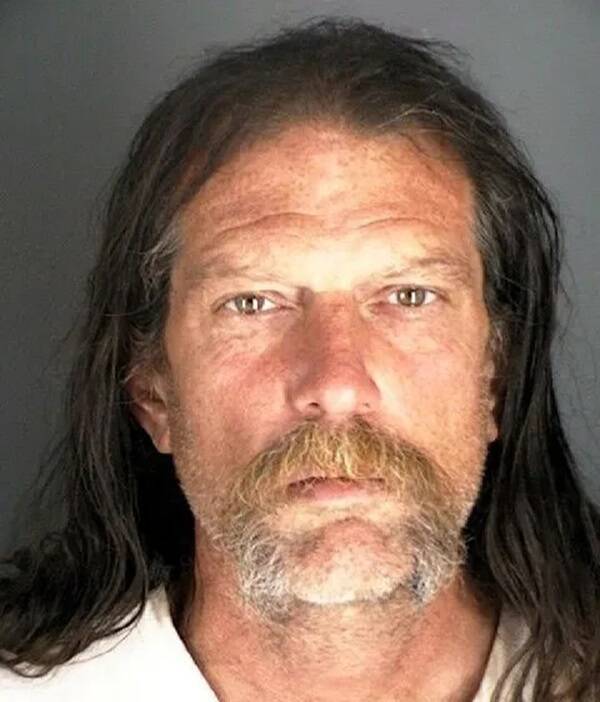
Colorado Department of CorrectionsGary Oliva is a child sex offender who is seemingly obsessed with JonBenét Ramsey.
But that’s just one reason why some think Oliva murdered JonBenét Ramsey.
A convicted sex offender who had already sexually abused a seven-year-old girl in Oregon, Oliva had allegedly been spotted at a vigil for JonBenét outside the Ramseys’ home on the one-year anniversary of the murder. He had once tried to choke his own mother to death with a telephone cord. And when he was arrested in 2000 on unrelated charges, police found a stun gun in his backpack, as well as a photo of JonBenét, and a poem about her.
Oliva denied having killed JonBenét and DNA did not connect him to the scene. But when he was arrested in 2016 on child pornography charges, police found 335 photographs of JonBenét on his phone — in addition to the almost 700 photos he had that depicted sexual abuse of children.
In the years since then, Oliva’s obsession with JonBenét has apparently deepened, and he even seemingly confessed to killing the six-year-old by “accident.” But he’s never been charged with her murder.
That means that the question of who killed JonBenét Ramsey remains open. Sadly, many are convinced that her murder will never be definitively solved.
After exploring the unanswered question of who killed JonBenét Ramsey, look through these disturbing disappearances that remain unsolved. Or, go inside these chilling cold cases that have stumped investigators.





